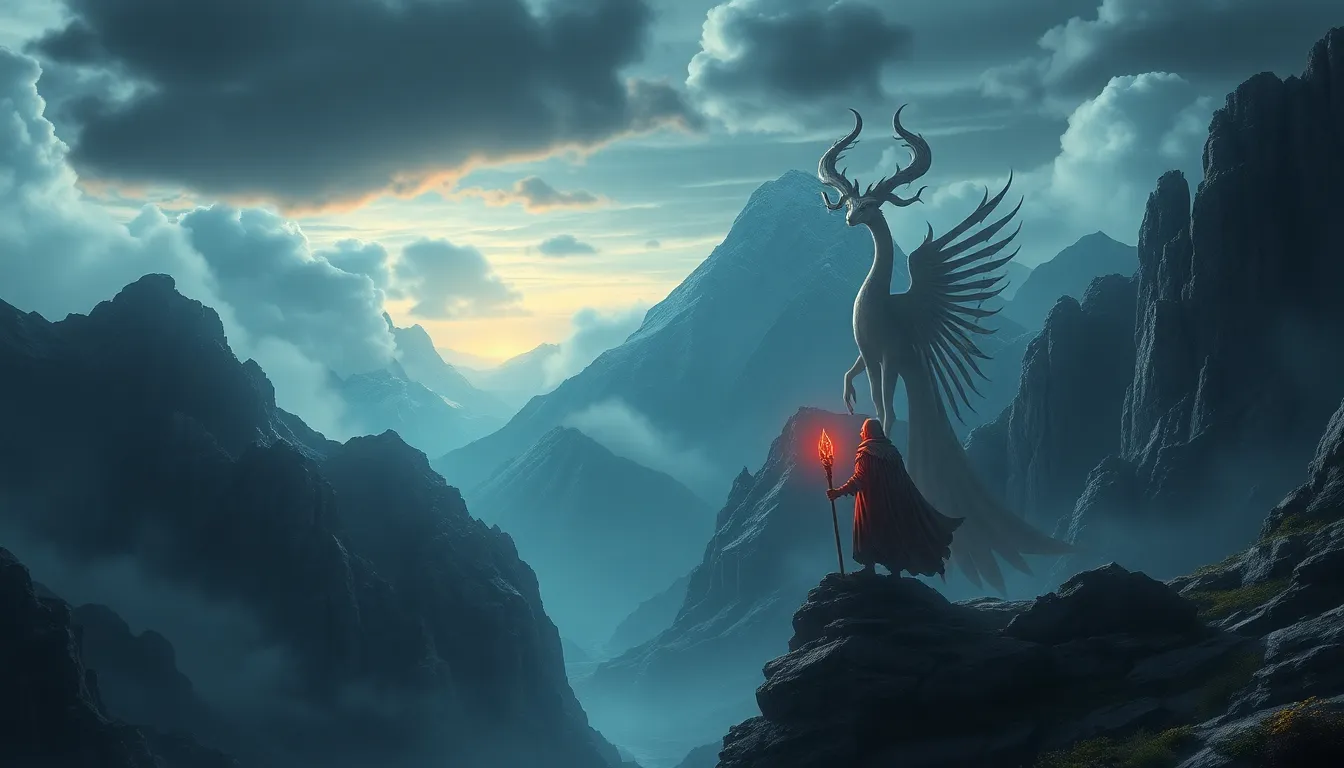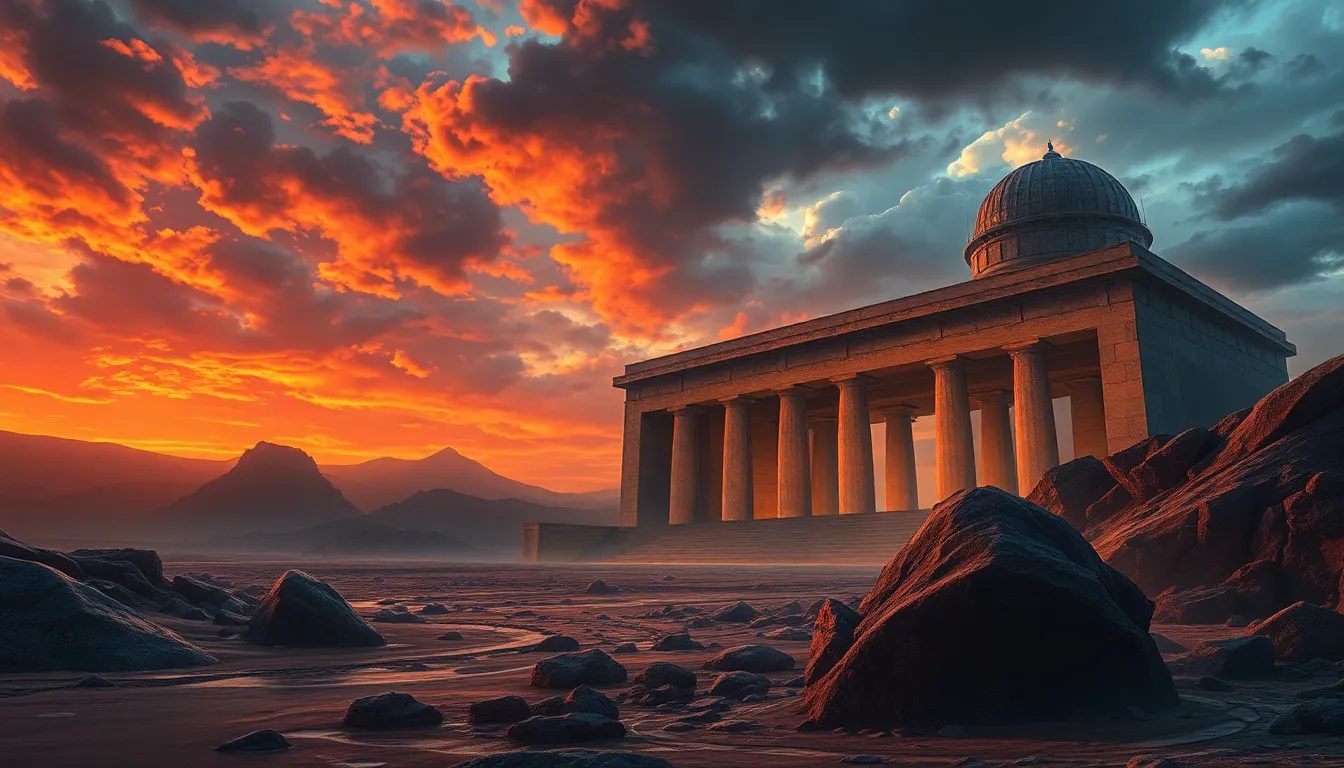The Mythical Guardians: Spirits Protecting Sacred Mountains
Introduction to Sacred Mountains
Sacred mountains hold a significant place in the cultural and spiritual landscapes of various societies around the world. These towering natural formations are often seen as sacred spaces, imbued with spiritual meanings that transcend mere physical presence. Sacred mountains are typically viewed as the dwelling places of divine beings or ancestors, and they serve as focal points for worship, pilgrimage, and communal identity.
The significance of sacred mountains can be observed in numerous cultures, from the majestic peaks of the Andes in South America to the revered Mount Fuji in Japan. These mountains are not just geographical features; they are integral to the belief systems that surround them, providing a connection between the earthly realm and the spiritual world.
Cultural Perspectives on Guardianship
Across various cultures, nature is often personified through the belief in spirits that serve as guardians of the natural world. This personification reflects a deep respect and reverence for the environment, emphasizing the interconnectedness of all living beings.
Indigenous traditions worldwide showcase an array of guardian spirits associated with sacred mountains:
- Native American Tribes: Many tribes believe in mountain spirits that protect their lands and provide guidance.
- Himalayan Cultures: In the Himalayas, mountains like Kailash are seen as the abode of gods, with spirits that guide and protect pilgrims.
- Japanese Shinto: Mount Fuji is considered a sacred entity, home to deities that watch over the region.
This comparative analysis reveals that while the specifics vary, the underlying theme of guardianship is prevalent across cultures, highlighting the universal human desire to connect with and protect nature.
The Role of Mythical Guardians
Mythical guardians play a crucial role in folklore and mythology, often embodying the qualities that cultures aspire to uphold. These spirits are seen as protectors of the land, offering guidance to those who seek to understand the mysteries of the natural world.
The functions of mythical guardians can be summarized as follows:
- Protection: They safeguard the sacredness of the mountain and its surrounding ecosystem.
- Guidance: They provide wisdom to the people, helping them navigate challenges.
- Preservation: They inspire communities to maintain the health and integrity of their natural environments.
The symbolism associated with these spirits emphasizes the importance of harmony between humans and nature, reminding us of our responsibilities as stewards of the earth.
Notable Sacred Mountains and Their Guardians
Several sacred mountains around the world are deeply intertwined with their guardian spirits. Here are a few notable examples:
- Mount Fuji (Japan): Revered as a sacred site in Shinto, it is believed to be protected by the goddess Konohanasakuya-hime, who symbolizes life and nature.
- Mount Kailash (Tibet): Considered the abode of Shiva in Hinduism, it is also sacred to Buddhists and Jains, believed to be watched over by various deities.
- The Andes (South America): Mountains like Aconcagua are seen as sacred by the Inca, with Pachamama (Mother Earth) serving as a guardian spirit.
These mountains are not just geological formations; they are living entities within their respective cultures, with stories and beliefs that enrich the human experience.
Rituals and Offerings to Guardians
Local communities often engage in rituals to honor and appease the spirits of sacred mountains. These rituals vary widely, reflecting the unique cultural traditions of each community.
Common practices include:
- Offerings: Items such as food, flowers, and incense are left at sacred sites as a sign of respect and gratitude.
- Pilgrimages: Many cultures undertake long journeys to sacred mountains, viewing the trek as a spiritual quest.
- Festivals: Seasonal celebrations often coincide with significant astronomical events, where communities gather to honor their mountain guardians.
The significance of these offerings lies in their ability to strengthen the bond between humans and the spiritual realm, fostering a sense of community and continuity.
Legends and Stories of Guardian Spirits
Legends and tales surrounding mythical guardians often feature themes of bravery, sacrifice, and harmony with nature. These narratives serve to educate and inspire, passing down cultural values through generations.
Some key legends include:
- The Legend of Mount Fuji: The story of the goddess who created the mountain to protect the land and its people.
- The Tale of Mount Kailash: Stories of pilgrims who undertake the arduous journey to the mountain in search of spiritual enlightenment.
- Andean Myths: Legends of Pachamama and the sacrifices made by the Inca to honor her and ensure bountiful harvests.
These stories often reiterate the importance of respecting nature and the guardians that protect it, serving as both moral lessons and spiritual guidance.
Impact of Modernity on Sacred Mountains and Their Spirits
As the world modernizes, sacred mountains face numerous challenges. Tourism, urbanization, and environmental degradation pose threats to these sacred sites and their cultural significance.
Case studies highlight specific mountains facing these issues:
- Mount Fuji: Increased tourism has led to environmental concerns, with calls for sustainable practices to protect its sacredness.
- Mount Kailash: The rise in pilgrimage traffic has raised concerns about pollution and the preservation of the mountain’s spiritual integrity.
- The Andes: Mining and deforestation threaten the ecosystems and cultural heritage associated with these sacred sites.
The impact of modernity emphasizes the need for a balance between development and the preservation of spiritual and ecological values.
Revival of Spiritual Practices
In response to the challenges posed by modernization, many communities are striving to revive traditional practices and beliefs associated with their sacred mountains. This revival is crucial for maintaining cultural identity and spiritual connection.
Examples of community efforts include:
- Education Programs: Initiatives aimed at educating younger generations about the significance of their sacred mountains and the associated rituals.
- Sustainable Tourism: Promoting eco-friendly tourism practices that respect the cultural and spiritual significance of the mountains.
- Collaborative Conservation Efforts: Partnerships between local communities and environmental organizations to protect sacred sites.
These movements highlight the resilience of cultural traditions and the importance of community engagement in preserving sacred mountains and their guardians.
The Intersection of Nature and Spirituality
The relationship between nature and spirituality is profound, with sacred mountains serving as focal points for this connection. They inspire a sense of awe and reverence, fostering ecological awareness and conservation efforts.
Sacred mountains encourage communities to:
- Protect Biodiversity: Recognizing the intrinsic value of their ecosystems and the need to safeguard them.
- Promote Sustainable Practices: Understanding the impact of human activity on the environment and advocating for responsible stewardship.
- Foster Community Bonds: Bringing people together to celebrate and protect their shared heritage.
This intersection of nature and spirituality enriches cultural traditions, emphasizing the need for harmony between humanity and the natural world.
Conclusion: The Enduring Legacy of Mythical Guardians
The stories and beliefs surrounding sacred mountains and their mythical guardians are invaluable cultural treasures that deserve respect and appreciation. These narratives not only enrich cultural identity but also serve as reminders of our responsibility to protect the environment.
As we navigate the complexities of modern life, it is essential to recognize the importance of preserving these sacred sites and the spiritual practices associated with them. A collective effort to honor and protect these mountains will ensure that their legacy endures for future generations.
Let us commit to respecting and appreciating the guardians of our sacred mountains, recognizing their role in the rich tapestry of human culture and the natural world.



